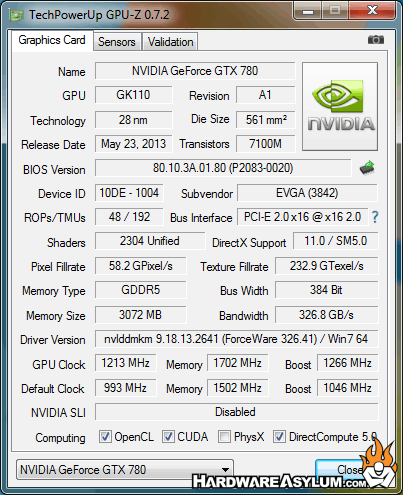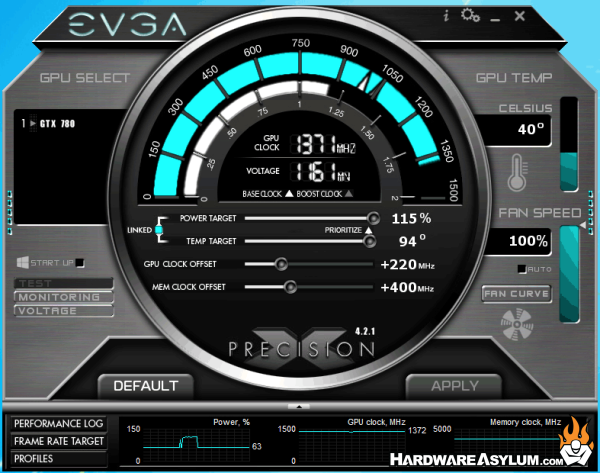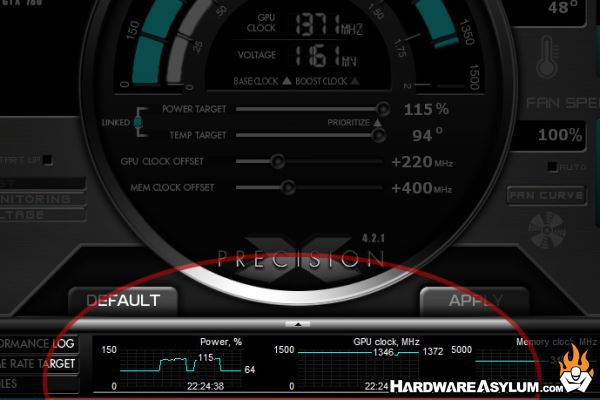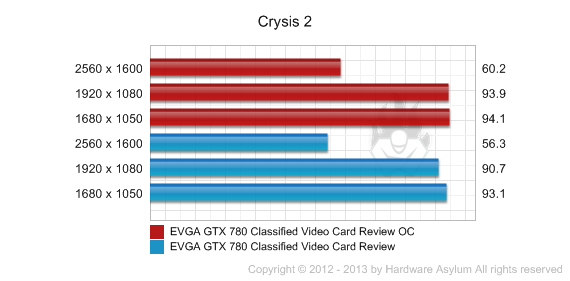EVGA GTX 780 Classified Video Card Review
Author: Dennis Garcia
Published: Wednesday, August 07, 2013
Overclocking
As we eluded there are two reasons to buy an EVGA Classified video card and arguably the most important of them is overclocking. The larger VRM is the driving factor behind this decision as it will increase stability and power delivery to the GPU allowing for higher overclocks. Without it there is a chance you can quickly overpower the circuits and basically burn up the card assuming OCP doesn't kick in first.
Overclocking the Kepler is a little different from previous generation GPUs since you must contend with a non-adjustable Boost Clock. NVidia Boost 2.0 is a form of dynamic overclocking that is determined by GPU temperature, the lower the temperature the higher the boost clock. For these tests we settled on a monster overclock of 1371Mhz Core and 1700Mhz Memory. (+220 / +400 respectively). To enable this overclock the power target was increased to 115% (using the secondary BIOS) along with a slight voltage bump from the software based GTX voltage tool. Yep, no EVBot for me this round..
Overclocking the Kepler is a little different from previous generation GPUs since you must contend with a non-adjustable Boost Clock. NVidia Boost 2.0 is a form of dynamic overclocking that is determined by GPU temperature, the lower the temperature the higher the boost clock. For these tests we settled on a monster overclock of 1371Mhz Core and 1700Mhz Memory. (+220 / +400 respectively). To enable this overclock the power target was increased to 115% (using the secondary BIOS) along with a slight voltage bump from the software based GTX voltage tool. Yep, no EVBot for me this round..


Much to our suprise this GPU would run in excess of 1400Mhz but wasn't scaling in our benchmarks. To determine exactly what was going on we left the EVGA Precision X running and watched the Performance Log.
As you can see even at our target frequency of 1370Mhz the card was bumping up against the Power Target which in turn was throttling the GPU.
As you can see even at our target frequency of 1370Mhz the card was bumping up against the Power Target which in turn was throttling the GPU.

Looks like I'll be in the market for a custom BIOS image. 




Overclocking Conclusion
This is by far one of the best video cards we have ever used especially given the performance results using nothing more than the EVGA ACX cooling solution and a slight voltage bump. Overall we are extremely pleased with our results and are little sad that we couldn't hit 1400Mhz using the factory BIOS images. Keep in mind that overclocking is not guaranteed so your results may vary.
For the record we did crank the fans up to 100% for these tests to ensure that excess heat wouldn't throttle our overclock. As it would turn out the power used to drive the fans is part of the Power Target calculation. Removing the fans by either using an external power source or switching to watercooling will give you more headroom and likely provide better performance.
For the record we did crank the fans up to 100% for these tests to ensure that excess heat wouldn't throttle our overclock. As it would turn out the power used to drive the fans is part of the Power Target calculation. Removing the fans by either using an external power source or switching to watercooling will give you more headroom and likely provide better performance.

